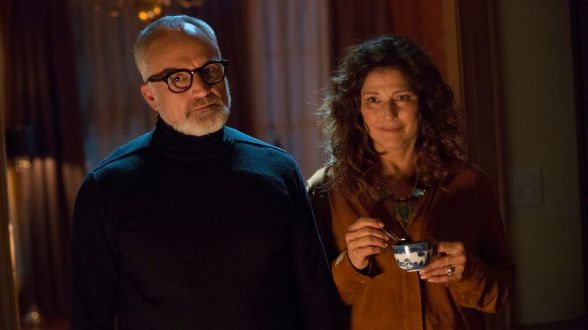When sitting down to watch an Asghar Farhadi film (“A Separation,”
“The Past”) you never know exactly what you’re going to get, what path you’re
going to go down. “The Salesman” begins as a mundane domestic drama/slice of
life portrait revolving around married couple Emad (Shahab Hosseini) and Rana
(Taraneh Alidoosti) as they and others put on production of Arthur Miller’s
iconic play “Death of a Salesman.” Emad and Rana are looking for a new place to
live, so at the advice of a friend they move into a recently vacated apartment.
In fact it’s been vacated so recently that the stuff from the previous tenant
(furniture, personal belongings) is still there, boarded up in a room.
From there, an intriguing and unexpected mystery slowly
begins to emerge: who is this previous tenant and why did she leave her stuff?
Right as Emad and Rana are beginning to collect information about this mystery
person “The Salesman” pivots into crime/thriller territory. Rana is assaulted
one evening, and that’s as specific as I’m going to get on that front, so as
not to spoil it. Rana is left with a head injury and even greater psychological
damage. She doesn’t want to be anywhere alone, she feels like a stranger in her
own home and she’s even unable to work on the play. The incident also takes its
toll on Emad; he wants to be supportive of his wife but he also wants to be proactive
about the situation. When Rana chooses not to go to the authorities Emad is
left feeling frustrated and useless.
Farhadi is a master at crafting naturalistic film suspense.
There’s no dramatic music, flashy editing, or showey cinematography. In other
words, he’s not trying really hard to make you feel tense. Instead, the forty
five year old Iranian filmmaker (who just recently won his second Oscar for
Best Foreign Language Film) makes it look easy-- through deliberate yet steady
pacing, a cleverly understated script that keeps the movie’s focus on its
central couple and natural acting. Hosseini and Alidoosti give such restrained
and nuanced performances, never letting the material or their roles drift into
melodramatic territory. Overall, “The Salesman” is measured, quietly absorbing
stuff. Even when the plot takes a wild turn or two Farhadi never allows the
film to collapse into outrageousness and implausibility. Fed up with this
incident and the toll has it has taken on his relationship, Emad decides to
take matters into his own hands and “The Salesman” turns into a revenge drama.
Though it’s not the revenge drama you expect.
Revenge is one of those romanticized concepts that can only
be truly satisfying in fiction. On the silver screen, revenge being carried out
can be oh so sweet--a vigilante taking the law into his or her own hands to
punish a despicable person. I admit that I’m a sucker for a good revenge flick.
But in real life, revenge usually isn’t that sweet. In most cases all it brings
is more anger and heartache. In keeping with its naturalistic style, “The
Salesman” opts for this more realistic outlook on revenge and is better for it.
Emad becomes consumed with anger and sadness, causing him to be reckless and
uncharacteristically cruel. Vengeance isn’t so satisfying after all; in fact it
can actually make things significantly worse for you. Ultimately, “The Salesman”
is more about the effects Emad’s pursuit of vengeance has on his already
vulnerable relationship with Rana than the act of vengeance itself, making it
one of the freshest movies about revenge in years.




